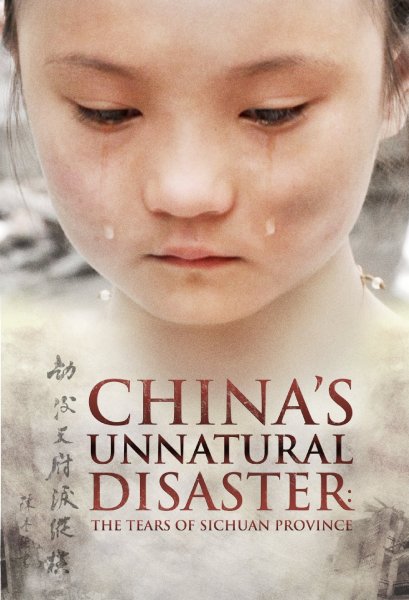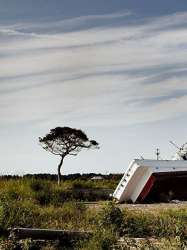China's Unnatural Disaster: The Tears of Sichuan Province is a film of genre Documentary directed by Jon Alpert released in USA on 7 may 2009
China's Unnatural Disaster: The Tears of Sichuan Province (2009)

If you like this film, let us know!
- Infos
- Casting
- Technical infos
- Photos
- Videos
- Film quotes
- Characters
- Music
- Awards
China's Unnatural Disaster: The Tears of Sichuan Province is a 2009 documentary film co-directed by Jon Alpert and Matthew O'Neill of the Downtown Community Television Center, and produced by MZ Pictures for HBO Films.
The documentary covers the aftermath of the 2008 Sichuan earthquake on May 12, which killed around 70,000 people—of which 10,000 were children, many of whom were killed when their schools collapsed. The film focuses on the grieving families and communities of the children, as they mourn their loss and question the government over the construction standard of the schools.
Alpert and O'Neill sent the raw footage of the film by courier to the United States, before they were detained and questioned by local police for eight hours as they tried to leave the country themselves. In September 2009, the filmmakers were scheduled to present the film at the Shanghai International Film Festival, but were denied visas by the Chinese government.
China's Unnatural Disaster was nominated for the Academy Award for Best Documentary (Short Subject) in 2009.
Trailer of China's Unnatural Disaster: The Tears of Sichuan Province
Bluray, DVD
Streaming / VOD
Comments
Leave comment :
Suggestions of similar film to China's Unnatural Disaster: The Tears of Sichuan Province
There are 3 films with the same director, 8973 with the same cinematographic genres, 3369 films with the same themes (including 98 films with the same 2 themes than China's Unnatural Disaster: The Tears of Sichuan Province), to have finally 70 suggestions of similar films.If you liked China's Unnatural Disaster: The Tears of Sichuan Province, you will probably like those similar films :

Baghdad ER (2006)
, 1h4Directed by Jon Alpert, Matthew O'Neill
Genres Documentary
Themes Documentary films about war, Documentary films about historical events, Political films
Rating79%






9/11: Press for Truth (2006)
, 1h25Origin USA
Genres Documentary
Themes Films based on the September 11 attacks, Films about religion, Films about terrorism, Transport films, Aviation films, Documentary films about law, Documentary films about war, Documentary films about historical events, Documentary films about politics, Documentary films about religion, Documentary films about technology, Documentary films about terrorism, Political films, Films about Islam, Dans un avion, Disaster films, Films about aviation accidents or incidents, Films about hijackings
Rating79%






Genres Documentary
Themes Environmental films, Seafaring films, Transport films, Documentary films about environmental issues, Documentary films about historical events, Documentary films about nuclear technology, Documentary films about technology, Disaster films, Films about earthquakes
Rating67%





Surviving the Tsunami brings together social, environmental, and personal perspectives of the national catastrophe of the Fukushima nuclear meltdown. In the documentary, Kyoko Miyake travels back to her hometown in Namie, Fukushima, to revisit her old life and assess the trauma still lingering from the disaster. She revisits Namie, her mother's hometown and meets the people who depended on the success of the nuclear plant for their livelihood. The film also follows Bunsei Watanabe and Kyoko Miyake's Aunt Kuniko, two people who hope for the rejuvenation of Namie, despite the disaster that has occurred. Despite having lost family, friends, and jobs due to the meltdown and subsequent fear of the contamination zone, these two individuals are determined to rebuild their towns and neighborhoods and bring back the sense of community they once had. The film follows the residents of Namie, with emphasis on the experiences of Aunt Kuniko, as they come to terms with the reality of living in or near the "radiation zone" left in the wake the plant's nuclear meltdown. Surviving the Tsunami offers a different perspective on Japanese culture, national identity, human adaption, and global nuclear energy and proliferation.

3.11: Surviving Japan (2013)
, 1h30Directed by Simon Hilton
Genres Documentary
Themes Environmental films, Seafaring films, Transport films, Documentary films about environmental issues, Documentary films about historical events, Documentary films about nuclear technology, Documentary films about technology, Disaster films, Films about earthquakes
Rating81%





The film spans from March 11, 2001 to September 19, 2011, starting with Noland's own experience in the Tōhoku Earthquake and tsunami, Fukushima Daiichi nuclear disaster followed by volunteer activities in Ofunato

The Flight That Fought Back (2005)
, 1h30Origin USA
Genres Drama, Documentary
Themes Films based on the September 11 attacks, Films about religion, Films about terrorism, Transport films, Aviation films, Documentary films about law, Documentary films about war, Documentary films about historical events, Documentary films about politics, Documentary films about religion, Documentary films about technology, Documentary films about terrorism, Political films, Films about Islam, Disaster films, Films about aviation accidents or incidents, Films about hijackings
Actors Greg Benson, Pej Vahdat
Rating73%






Draquila: Italy Trembles (2010)
, 1h33Directed by Sabina Guzzanti
Genres Documentary
Themes Politique, Documentary films about historical events, Documentary films about politics, Political films, Disaster films
Actors Sabina Guzzanti
Rating74%





Beginning from the earthquake in L'Aquila in 2009, the film investigates the way the "Protezione Civile" reacted to the catastrophe. It is shown as an extension of the government, not respecting the law, and putting political service above its responsibilities of the crisis. Sabina Guzzanti caricatures Prime Minister Silvio Berlusconi and is critical of the government, especially Berlusconi and Guido Bertolaso, the chief of the Protezione Civile. She presents the Italian opposition as invisible and ineffective.

Countdown to Ground Zero (2006)
, 1h30Origin USA
Genres Documentary
Themes Films based on the September 11 attacks, Films about religion, Films about terrorism, Transport films, Aviation films, Documentary films about law, Documentary films about war, Documentary films about historical events, Documentary films about politics, Documentary films about religion, Documentary films about technology, Documentary films about terrorism, Political films, Films about Islam, Disaster films, Films about aviation accidents or incidents, Films about hijackings
Actors Robert Neal Marshall
Rating60%





 , 45minutes
, 45minutesOrigin USA
Genres Documentary
Themes Films based on the September 11 attacks, Films about religion, Films about terrorism, Transport films, Aviation films, Documentary films about law, Documentary films about war, Documentary films about historical events, Documentary films about politics, Documentary films about religion, Documentary films about technology, Documentary films about terrorism, Political films, Films about Islam, Disaster films, Films about aviation accidents or incidents, Films about hijackings

The Russian Woodpecker (2015)
, 1h20Origin USA
Genres Documentary, Historical
Themes Environmental films, Documentary films about environmental issues, Documentary films about historical events, Documentary films about nuclear technology, Documentary films about technology, Disaster films
Rating66%





The films focuses on Fedor Alexandrovich's research into the cause of the Chernobyl nuclear disaster in Ukraine and its potential connection to a Soviet Cold War-era structure, the Duga over-the-horizon radio antenna. His investigation is interrupted and impacted by the 2014 EuroMaidan uprising, which eventually led to the ouster of the pro-Russian president Viktor Yanukovych.

Chernobyl Heart (2003)
, 39minutesOrigin USA
Genres Documentary
Themes Environmental films, Documentary films about environmental issues, Documentary films about historical events, Documentary films about nuclear technology, Documentary films about health care, Documentary films about technology, Disaster films
Rating77%





La réalisatrice voyage à travers l'Ukraine et la Biélorussie et observe les effets de la catastrophe nucléaire de Tchernobyl. De nombreux enfants souffrent de problèmes cardiaques, ainsi que de sévères problèmes liés aux radiations.
 Connection
Connection